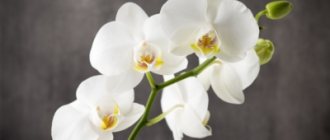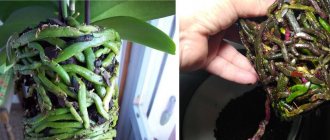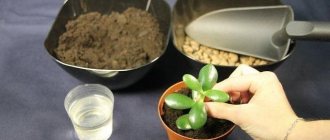The popular flower is a greenhouse flower and requires special care . Therefore, home gardeners need to treat their overseas guest with trepidation and know the subtleties of care so that the delicate flower will delight with a variety of colors. But what should you do if, some time after the housewarming, the orchid flowers on the windowsill begin to wither, dry out and fall off?
Why do the buds dry out? The main reasons: possible stress, a flower pot, poor lighting or, on the contrary, excess sunlight, hypothermia or overheating, drafts in the room, improper watering of the plant. The situations are different, but the algorithm for saving the ornamental beauty is the same: an ambulance is needed, otherwise the orchid will die.
Hypothermia
Hypothermia is a common cause of inflorescences falling off. If you purchased an orchid in a store in winter and take the plant home, remember:
Transportation in winter causes hypothermia. First aid: pack the plant in cellophane and paper. The packaged delicate orchid tolerates frost for no more than 15 minutes.
Causes hypothermia and drafts when ventilated . It would seem that resuscitation of the plant is simple: eliminate ventilation. But the difficulty of such a step lies in the fact that the tropical guest does not tolerate stuffiness well and cannot do without proper ventilation.
Important! The orchid needs ventilation. But it is unacceptable to leave the flower in a draft. In summer, take the orchid outside or onto the balcony.
Summer air baths are useful , but remember that cold nights will destroy the capricious heat-loving flower. But what to do if preventive measures did not help and the leaves fell? Recommendations step by step:
- Wilted flowers should be removed;
- move the plant to a warmer place;
- eliminate drafts, install gentle ventilation;
- Leave the plant alone; it does not need replanting.
Spraying: benefit or harm?
The orchid is sprayed daily, but keep a few nuances in mind. If the air in your apartment is dry, use a humidifier. To prevent the flowers from drying out, bathe the orchid in the shower once a month, and after water treatments, wipe the leaves dry. For spraying to be beneficial, follow the rules :
- The water temperature for spraying is two degrees higher than indoors.
- If the room temperature is below 20 degrees, spray less frequently or eliminate water procedures.
- Spray in the morning.
- Do not spray the flower in direct sunlight under any circumstances, otherwise a burn will occur!
- It is not advisable to spray flowers to avoid stains on them and premature falling off.
If prevention did not help and the flowers began to fall off:
- Reduce the number of sprays.
- Remove faded inflorescences.
- Normalize the light mode.
- Ensure proper watering.
We invite you to watch an informative video about spraying an orchid:
Humidity: optimal value
Lack of moisture or its excess is the most common cause of problems . An acute lack of moisture occurs if watering is stopped for some reason. In this case, resuscitation cannot be avoided!
Instructions for this case:
- Pour water at room temperature into the basin to a level of no more than 15-20 cm.
- Immerse in a basin of water and wait until the earthen lump becomes limp.
- Please note that the leaves must be dry when immersed in the basin!
- If the earthen ball is too limp, it is necessary to place the patient in a new pot.
Keeping it too wet creates another serious problem: the phalaenopsis begins to rot. Affected by rot, the flower loses its foliage, the leaves become soft, and the flowers fall off.
Rotting is always easier to prevent than to treat. If 90% of the plant is infected, it will die!
It is important to take timely measures and eliminate the causes of rot:
Remove the flower from the pot.- Rinse the roots under warm running water.
- Remove damaged roots and leaves.
- Remove wilted flowers.
- Treat the sections with an antiseptic.
- Leave to dry overnight.
- Replant the orchid in new soil with a drainage layer.
- Water only after the soil has dried.
Antiseptics for orchids: Fundazol, Fitosporin . Treatment of wounds against rot: Chlorhexidine. After reading such detailed instructions, the question remains: how to properly water an orchid?
Plant care before flowering
To prevent the occurrence of a number of problems associated with orchid flowering, you need to know what factors influence this process.
Lighting
Illumination is one of the main conditions for good growth and flowering of an orchid:
Additional illumination using a phytolamp.
Low illumination of the orchid in the winter and autumn seasons determines the absence of flowering during this period.
Watering
One of the most common reasons for the death of buds is a violation of the watering regime:
With further spread of root rot, the development of the peduncle is delayed and it dies off along with the buds that did not have time to open.
Substrate
When preparing a substrate for transplantation, orchids are guided by indoor conditions, primarily humidity and light. To do this, add more or less moisture-absorbing sphagnum moss to the soil mixture.
For apartments with low humidity, a soil mixture of pine bark, charcoal, moss and foam balls (5:1:1:1) is suitable.
An equally important characteristic is the acidity (pH) of the soil.
How to determine soil acidity?
Alkalinization of the soil, like excess acidity, will have negative consequences.
Setting the soil pH level at home is quite simple:
Litmus paper is the most accurate way to determine acidity.
Knowing the acidity level of the substrate, you can adjust this indicator to the optimum.
How to avoid alkalization?
Alkalinization of the soil and roots often produces a dry, whitish coating along the edge of the flower pot . To remove it, it is enough to soak the orchid once in a mixture of distillate and boiled water, taken in equal parts.
The composition of the soil mixture for orchids usually includes bark and sphagnum moss, which have a pH of 4.0-4.5; they give the mixtures low acidity. If there is a need to adjust the acidity level when preparing the soil mixture, you need to know that:
Adding additives will delay the alkalization of the substrate due to watering with hard water.
Proper watering
“It’s also science for me to water flowers from a watering can!” - the novice florist will exclaim. But experienced plant growers know that watering is an art. The quality of water, composition and temperature determine the well-being of the orchid. Tap water is not suitable due to the presence of heavy metals.
To water orchids, use soft, purified water.
The accepted practice of settling water for watering plants is not suitable in the case of a strange pet . To purify the liquid, use a filter, a distiller, boil and cool.
If it is not possible to boil or filter, acidification will help reduce the concentration of unnecessary calcium impurities. Apply oxalic acid following the instructions on the drug.
A competent schedule for watering orchids helps to avoid problems with waterlogging and drying out of the earthen clod. Note that the schedule depends on the time of year, temperature and humidity in the room and the life cycle of the plant.
During the active growing season, water the plants 2-3 times a week . During flowering, watering is increased. The principle of watering is simple: make sure that the soil substrate does not dry out or become waterlogged. In winter, watering is reduced, but spraying is not stopped.
How to water:
- using a watering can;
- immersion in the pelvis;
- shower;
- copious spraying.
How much water is needed for irrigation? Water until moisture begins to seep out of the holes in the bottom of the planter . The best time to water is early morning. Remember that proper watering will help avoid difficulties caused by waterlogging and drying out.
We offer a video about proper watering of an orchid:
Causes of bud drop
The timing and duration of budding in orchids depend on the variety and the microclimate created for the flower culture. Flowering is possible in any season and often with subsequent repetition.
Moreover, the general stage of flower opening in young plants lasts about 1-3 months, in adults - up to six months.
If the inflorescences turn yellow or fall off ahead of time, there may be several reasons for this related to poor care.
Violation of growing conditions
Orchids are quite capricious and do not tolerate unsuitable neighbors around them. Thus, cut garden bouquets of flowers and fruits that produce ethylene located close to them slow down the opening of inflorescences and lead to premature aging. Unopened buds eventually dry out and fall off.
Apples, avocados, apricots and pears have increased production of ethylene. Average production of this substance is found in tomatoes, bananas, peaches, mangoes, melons and plums.
- Flower culture responds negatively to frequent movements. Changing the usual place for an indoor orchid is one of the reasons why it does not bloom, and the leaves and peduncles wither.
- Excess moisture leads to rotting of the root system, which is responsible for all the nutrition of the plant. As a result, the orchid stops the budding process, and the corollas that have gained strength do not bloom.
- Lack of fertilizing, as well as its excess, is a common cause of lack of flowering. Particularly affected are phalaenopsis, which in the wild are accustomed to poor rocky soils and tree stumps with a minimal amount of nutritional components.
Damage by diseases and pests
Infectious diseases and the appearance of pests on flower crops lead to yellowing of the vegetative mass, incl. peduncles, slow down or completely prevent the onset of flowering. The loss of inflorescence is caused by fungal diseases and mealybugs, which primarily affect the root system, which is responsible for all the nutrition of the plant.
Incorrect microclimate
1. Lighting.
For full budding of a flower crop, bright diffused light is required for 12 hours or more.
Lack of light may cause buds to fall off.
Maintain the required lighting regime by placing the pot in the east or south direction of the room, shading it in the hottest hours in the summer to protect it from leaf burns.
In winter, additional lighting is provided using fluorescent spectrum lamps.
2. Temperature.
Optimal values for home growing are from 23 to 27°C.
Any deviations adversely affect the condition of the indoor orchid, which redirects all its forces to resist negative environmental factors. As a result, the plant cannot cope with the beginning of budding, and the unopened inflorescences dry out and fall off.
For a comfortable stay, orchids are placed away from heat sources.
Freezing of the root system is especially dangerous for flower crops when placing the pot on a cold windowsill or on the floor without the use of pallets and external cover for the pot. When hypothermia occurs, not only flower stalks suffer, but the rest of the vegetative mass. The consequences of lowering the temperature in the soil can be the most unfavorable, including the death of an indoor flower.
3. Humidity.
In their natural environment, orchids grow surrounded by humid air, so they do not tolerate a dry home atmosphere well, which results in the dropping of buds.
The indicators should be increased to 60-70%. This is done by placing vessels with water or household air humidifiers near the flower pot.
Sunstroke: first aid
Orchids are heat-loving, because they come from the tropics. This fact cannot be ignored, but a big mistake is to leave the flower in direct sunlight , near a heating radiator, or place it under a stream of scorching air from an air conditioner. A couple of hours of such sunny and warm baths are enough to cause trouble! The distress signal will come immediately: the flowers will fall, the leaves will shrivel!
What to do:
- Move the orchid away from the source of the problem.
- Water after 2 hours.
- After another hour, spray the plant.
- Follow the correct watering schedule.
Let there be light! Orchids need a lot of indirect light. With a lack of light, the leaves stretch out, become dull, and the flowers die.
Normal daylight hours average 12 hours. Young specimens require 16-18 hours of daylight. If there is too little light, simple devices will help: fluorescent lamps
Fluorescent lamps are suitable for additional lighting . The minimum distance from the leaves is 5-7 cm! If there are too many lamps, beware of overheating and sudden temperature changes when turning on and off.
Prevention is the key to success
It’s impossible not to love a fragile flower with a special charm. Anyone who has ever seen him is in love forever. So that the patient does not need ambulance, here are some final recommendations:
- The optimal temperature in summer is up to 25 degrees Celsius, in winter not lower than 16.
- Avoid temperature changes; the permissible difference without consequences is 5-6 degrees.
- The duration of daylight hours is from 12 hours.
- Choose a pot according to size.
- Air humidity – 55-65%.
- Ventilate the room, but avoid drafts.
- Replant every 2-3 years.
- Water 2-3 times a week, depending on the time of year and the plant's cycle.
- Spray sparingly, avoiding the procedure in direct sunlight.
- Shower - no more than once a month.
A drying orchid is a dangerous problem. Not only the flowers of a plant can dry out, but also the leaves, roots and stem.
Ethylene and its effect on flowering
You can imagine the following picture: autumn, on the bedside table not far from the window there is a blooming beauty, next to it is a vase of fruit. Beautiful? But such beauty will not last long , as the orchid will begin to dry out the flowers and buds. Why?
Flowering plants should not be placed near :
Orchids should not be grown near fruit.
Since the latter emit ethylene. Ethylene is a gas that is produced in some plants and fruits under the influence of the amino acid methionine.
Physiologists believe that ethylene is a plant aging hormone. To prevent fruits from spoiling quickly, varieties are developed in which ethylene synthesis is impaired. And then it is used for faster ripening of fruits.
Also, orchids should not be placed close to cut flowers, such as :
Plants such as :
The orchid dries out the buds when in contact with the above listed plants, fruits and vegetables.










